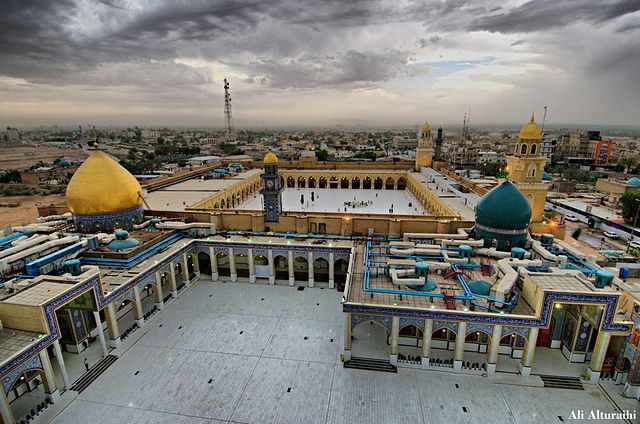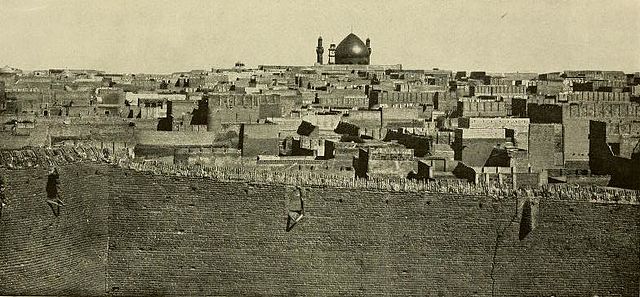Najaf or An-Najaf or Al-Najaf or An-Najaf al-Ashraf, is the capital city of Najaf Governorate in central Iraq about 160 km south of Baghdad. Its estimated population in 2024 is about 1.41 million people. It is widely considered amongst the holiest cities of Shia Islam and one of its spiritual capitals, as well as the center of Shia political power in Iraq. It is reputedly the burial place of Muhammad's son in law and cousin, ‘Alī ibn Abī Tālib. It is also the location of the largest cemetery in the world, (Wadi-us-Salaam), of one of the most important seminaries in the Shi'i Islamic world, and a major pilgrimage destination for Shia Muslims.
Image: Kufa Mosque
Image: Imam Ali shrine, Najaf 1980
Image: Imam Ali Mosque by tasnimnews.com 06
View of the city of Najaf, ca. 1914
Shia Islam is the second-largest branch of Islam. It holds that the Islamic prophet Muhammad designated ʿAlī ibn Abī Ṭālib as his successor (khalīfa) and the Imam after him, most notably at the event of Ghadir Khumm, but was prevented from succeeding Muhammad as the leader of the Muslims as a result of the choice made by some of Muhammad's other companions (ṣaḥāba) at Saqifah. This view primarily contrasts with that of Sunnī Islam, whose adherents believe that Muhammad did not appoint a successor before his death and consider Abū Bakr, who was appointed caliph by a group of Muhammad's other companions at Saqifah, to be the first rightful (rāshidūn) caliph after Muhammad. Adherents of Shīʿa Islam are called Shia Muslims.
Ḍarīẖ over ʿAlī's qabr (grave), Sanctuary of Imām ʿAlī, Najaf (present-day Iraq)
Kalema at Qibla of the Mosque of Ibn Tulun in Cairo, Egypt, displaying the phrase Ali-un-Waliullah (علي ولي الله: "ʿAlī is the Wali (custodian) of God").
Jamkaran Mosque in Qom, Iran, is a popular pilgrimage site for Shia Muslims. Local belief holds that the 12th Shīʿīte Imam—the promised Mahdi according to Twelvers—once appeared and offered prayers at Jamkaran.
Shia Muslims gathered in prayer at the Shrine of Imam Ḥusayn in Karbala, Iraq








